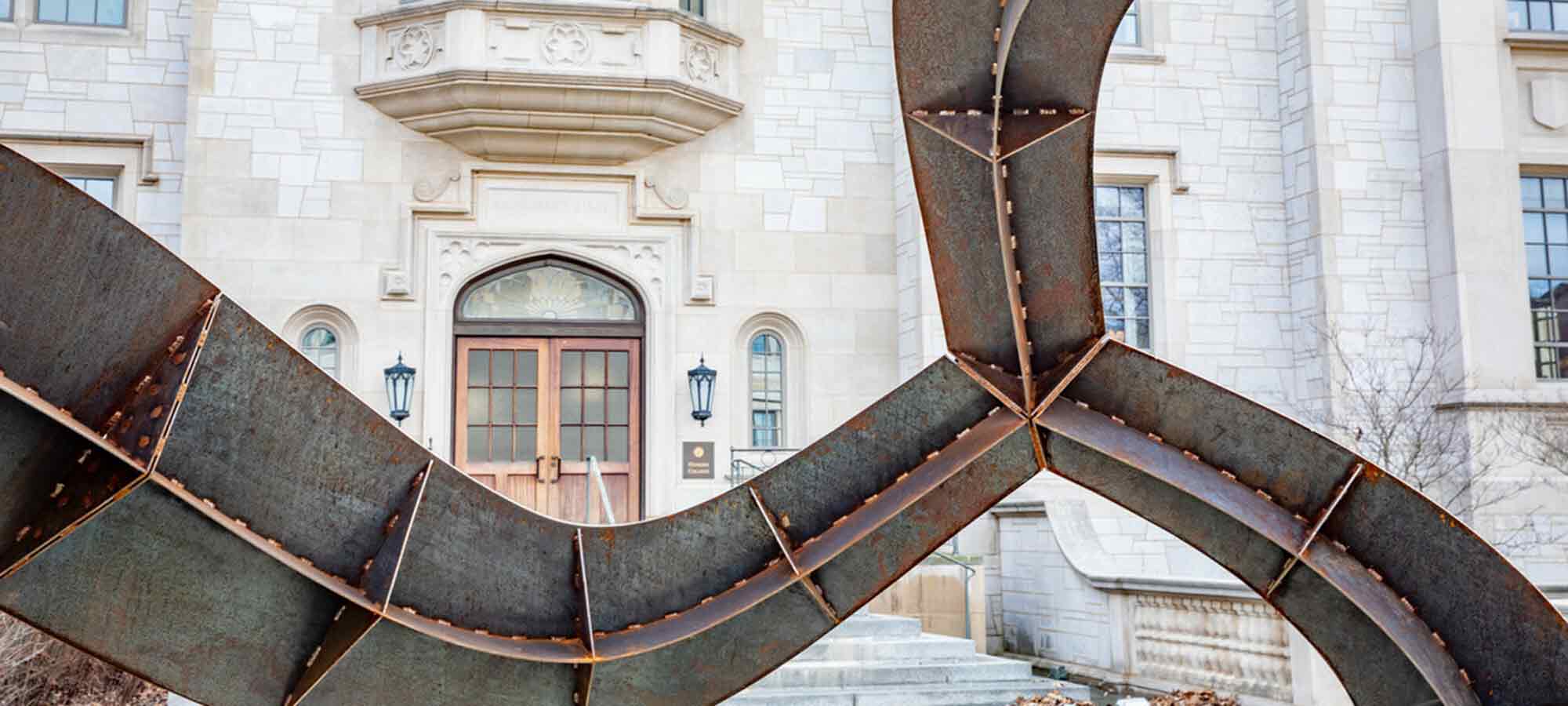
Pattern Play:
The Art of Mathematics
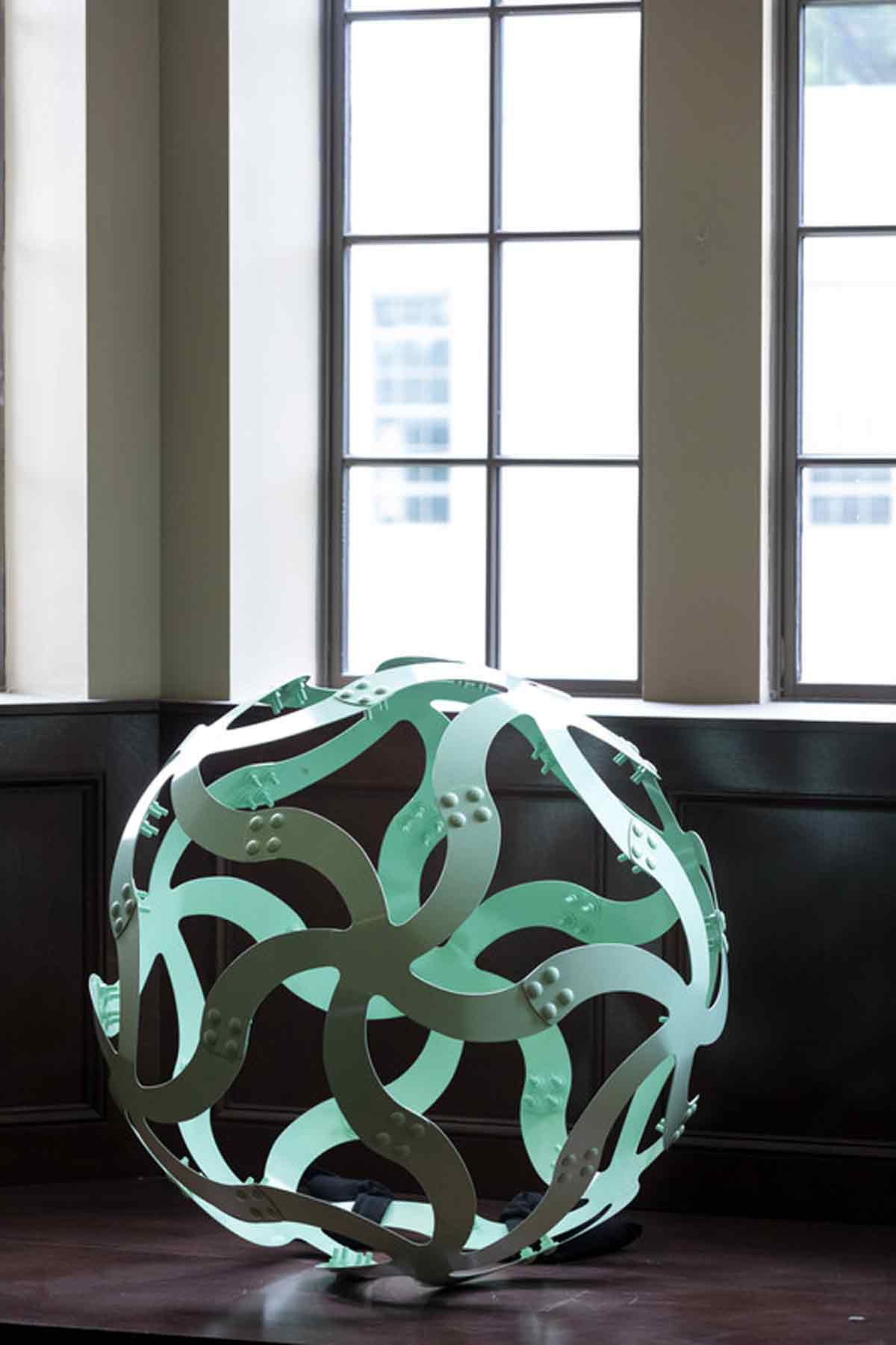
To most people, the pattern of a leopard’s spots or the hexagons of a bee’s honeycomb may simply look like pleasing patterns found in nature, but they represent so much more to Edmund Harriss, a University of Arkansas clinical assistant professor of mathematics. He finds these examples genuinely exciting because they demonstrate how the beauty and artistry of mathematics are all around us.
“We can understand and see things in nature – like patterns – through mathematics that we wouldn’t necessarily observe otherwise,” Harriss says. “However, you don’t have to be fluent in reaction-diffusion equations or optimal circle packing to appreciate nature’s mathematical artforms. Nor do you have to understand mathematics completely to appreciate the beauty that results from it.”
It’s impossible not to feel excited – or curious, at the very least – after hearing Harriss discuss mathematics. The British mathematician joined the university in 2010 and believes mathematics really is beautiful. It’s playful. It’s inspiring. It’s artistic. And he hopes his enthusiasm for the subject matter will be catching for anyone who hasn’t truly experienced the elegance of it.
Harriss believes that art provides the window to appreciate the beauty of mathematics, and whether that artform is dance, graphic design, or sculpture, it gives people an opportunity to take the mathematical concepts found in a textbook and see them in a different, more accessible way.
An exemplification of this is a larger-than-life-sized steel “Curvahedra” ball which sits proudly outside Gearhart Hall, home of the Honors College. Harriss coined the name by combining the words “polyhedra,” or objects with many flat faces, and “curve,” since the assembled pieces create curved versions of those forms. Essentially, the structure utilizes two-dimensional shapes to create something three dimensional and, in its finished 12-foot diameter form, offers passersby a respite from campus life and the opportunity to contemplate its uniqueness. It also showcases the prospect of turning abstract concepts into physical objects and is an impressive conversation piece.
“If you compare math to literature, you’ll realize that plenty of people discover the joys of both,” he says. “But if you don’t discover literature in school, you may still be exposed to it elsewhere. On the contrary, society doesn’t offer many opportunities where you can get excited about math outside of school. My goal is to put mathematics in a playful, choice-driven space where people can play with or appreciate mathematics through art and sculpture.”
 In his quest to make mathematics fun for all and help explain mathematic prinicples
in understandable ways, Harriss co-developed two coloring books: “Patterns of the
Universe: A Coloring Adventure in Math and Beauty” and “Visions of the Universe: A
Coloring Journey Through Math’s Great Mysteries.”
In his quest to make mathematics fun for all and help explain mathematic prinicples
in understandable ways, Harriss co-developed two coloring books: “Patterns of the
Universe: A Coloring Adventure in Math and Beauty” and “Visions of the Universe: A
Coloring Journey Through Math’s Great Mysteries.”

From Mind to Material
Harriss’s Curvahedra demonstrates that sometimes the best path from mind to material isn’t always a straight line. In this case, it’s the path of a swirled star with three branches.
The spherical art installation may have properties of metal, but Harriss encourages spectators to think of it as a flat sheet instead. Indeed, the geometrical shapes comprising the structure were the brainchild of Harriss himself, who designed the individual components that became the building blocks of the Curvahedra. He found that by piecing together the two-dimensional shapes, they could take on a three-dimensional form.
“The art aspect of mathematics came about as a way to communicate what I was seeing,” he said. “What I discovered through the process was that the Gauss-Bonnet Theorem was explaining how this system was working.”
 The segments of the Curvahedra are based on the Descartes’ Theorem and are a special
case of the Gauss-Bonnet Theorem, which is a relationship between surfaces in differential
geometry. Both are closely related to the Euler Characteristic.
The segments of the Curvahedra are based on the Descartes’ Theorem and are a special
case of the Gauss-Bonnet Theorem, which is a relationship between surfaces in differential
geometry. Both are closely related to the Euler Characteristic.
Fittingly, the outdoor Curvahedra sculpture was developed as part of an Honors College Signature Seminar in August 2018, “Place in Mind,” which Harriss taught with Carl Smith, professor of landscape architecture. The sculpture is the result of a process developed by Harriss and his colleague Emily Baker, who was the missing part of the equation for creating the physical piece. An alumna and assistant professor of architecture, Baker solved the puzzle of how to construct the sculpture.
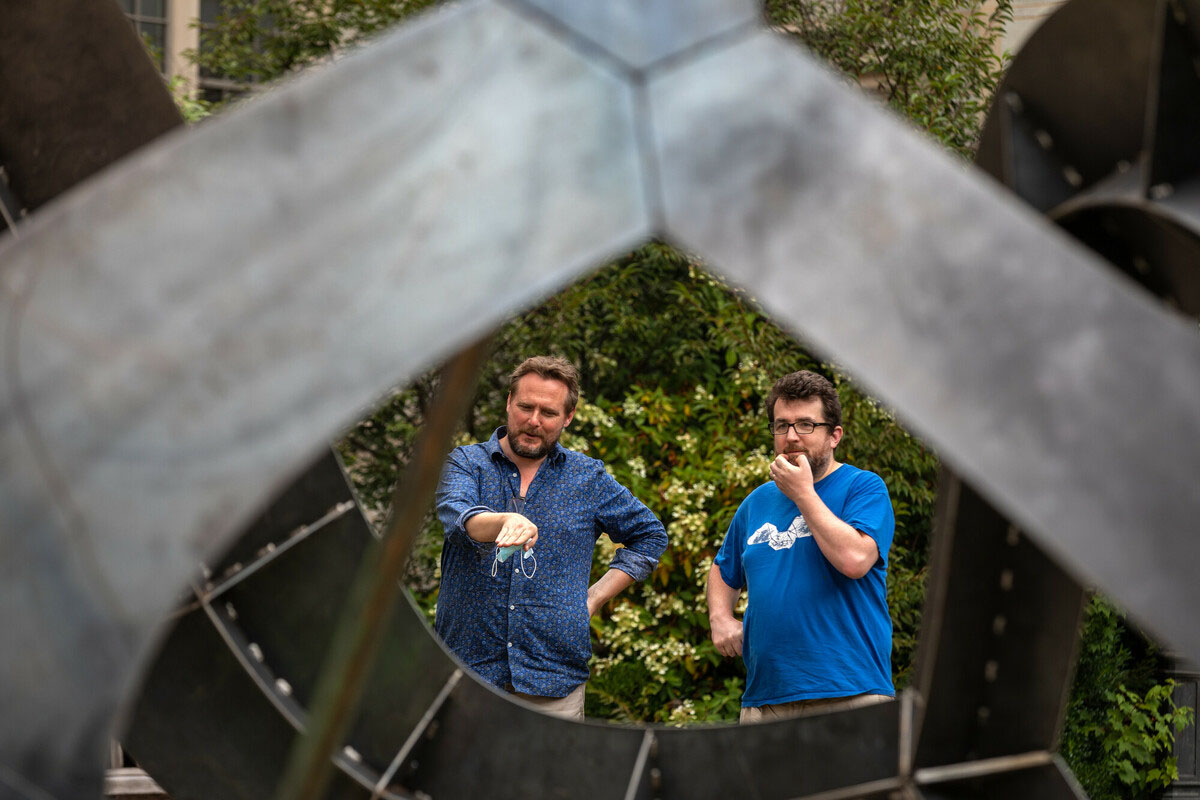
“I am deeply interested in exploring and innovating new ways of making physical objects and buildings,” Baker says. “My work posits that uncovering new choreographies of construction also uncovers potential for more flexibility and efficiency in construction, while expanding the formal possibilities for built objects. Having worked with Edmund on previous collaborations, I knew that our differences in skillset and approach could be very productive when they came together.”
 Baker was named a Bodenhamer Fellow in 1999 and is a Fay Jones School of Architecture
+ Design and Honors College alumna, bringing her experience with the Curvahedra full
circle.
Baker was named a Bodenhamer Fellow in 1999 and is a Fay Jones School of Architecture
+ Design and Honors College alumna, bringing her experience with the Curvahedra full
circle.
Utilizing a palm-sized paper model, which had been developed by Harriss and students in the class, Baker identified a strategy for taking it from a flexible form to a rigid structure, while also adding strength. Harriss’s mathematical methods were used to “unroll” curving parts into flat parts that were digitally cut in Baker’s lab. Then she utilized a jig, or clamping setup, to allow flat sections to be successfully attached, or “zipped,” into curving steel forms. This jig method, paired with Harriss’s computational formulations, inspired the Zip-Form construction system, the highly efficient and economical software and manufacturing process for which the university later filed a provisional patent.
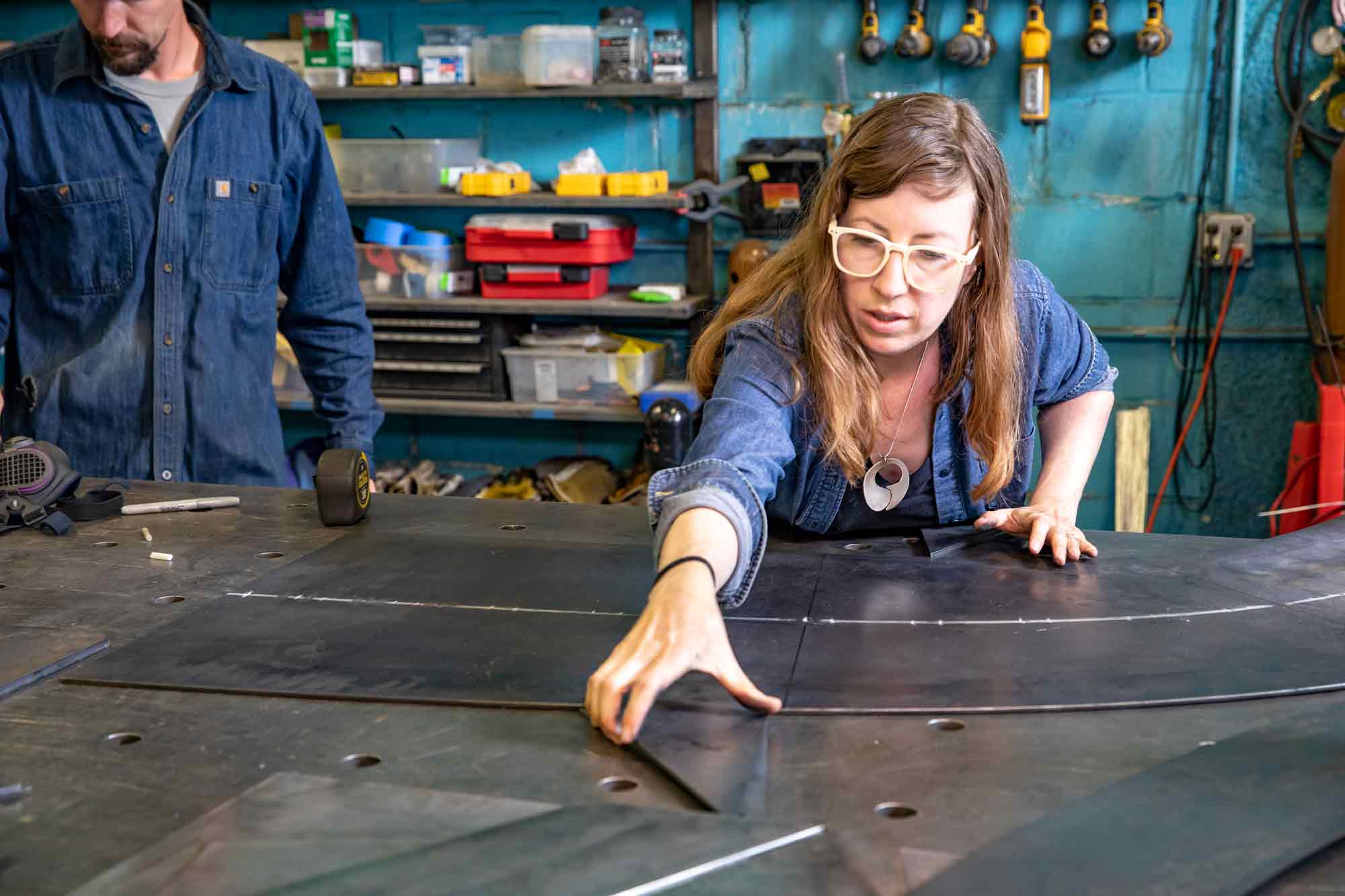
The successful completion of this 3-foot mock-up in steel gave the team the confidence it needed to tackle the large-scale version. Putting theory into practice, they worked with a local fabricator to scale up to the final 12-foot size using identical methods devised in the lab. Generally, such curving forms in steel are accomplished through heat and/or pressure treatments, but the Zip-Form method produced highly accurate 3D curves with greatly simplified fabrication techniques. The design of the individual pieces aided in the gentle creation of forms that fit together perfectly in the scaled-up version.
“The Curvahedra is proof that you can take complex geometric forms and fabricate them in an accessible way,” Harriss says.
“The Curvahedra is proof that you can take complex geometric forms and fabricate them in an accessible way,” Harriss says. “The techniques used in the creation of this sculpture open the door for more widespread applications, such as formwork for concrete beams. We can apply these principles to materials that already have a flatness to them and manufacture pieces that are more efficient in strength and yet use fewer resources.”
This premise is already being tested at MIT, where researchers are examining the application of the Zip-Form system to shape concrete structures with less material.
“Concrete is the primary structural material for nearly all of the global south, and there are huge implications for cost and material savings by reducing the amounts that are used,” Baker said. “It’s super exciting to see this project result in both art and very practical environmental solutions at the same time!”
Harriss notes, “This is an excellent example of how geometry and materials systems can find their way into our everyday lives. Mathematics can make things easier to do and allows for application even in the home. You won’t have to understand the math to apply the math.”
 In addition to working with researchers at MIT, Harriss and Baker are also working
with a Fortune 500 company to develop new manufacturing techniques using mathematical
applications.
In addition to working with researchers at MIT, Harriss and Baker are also working
with a Fortune 500 company to develop new manufacturing techniques using mathematical
applications.
The Shape of Things to Come
Harriss’s creation of the Curvahedra, much like mathematics as a whole, taught him a valuable lesson – one that he hopes he has passed along to his students.
“Appreciate the process and make it fun,” he says. “We can often get further and be more innovative by not focusing solely on the end result.”
Honors students majoring in engineering, art, biology, geology, architecture and landscape architecture were all involved in the “Place in Mind” class. Their explorations in drawing, games, poetry and mathematics culminated in the proposal for the unique structure.
“It’s kind of rare that I get to exercise the creative side of my brain in my coursework,” said Abby Rhodes, who has since graduated with a Bachelor of Science in geology and a minor in mathematics.
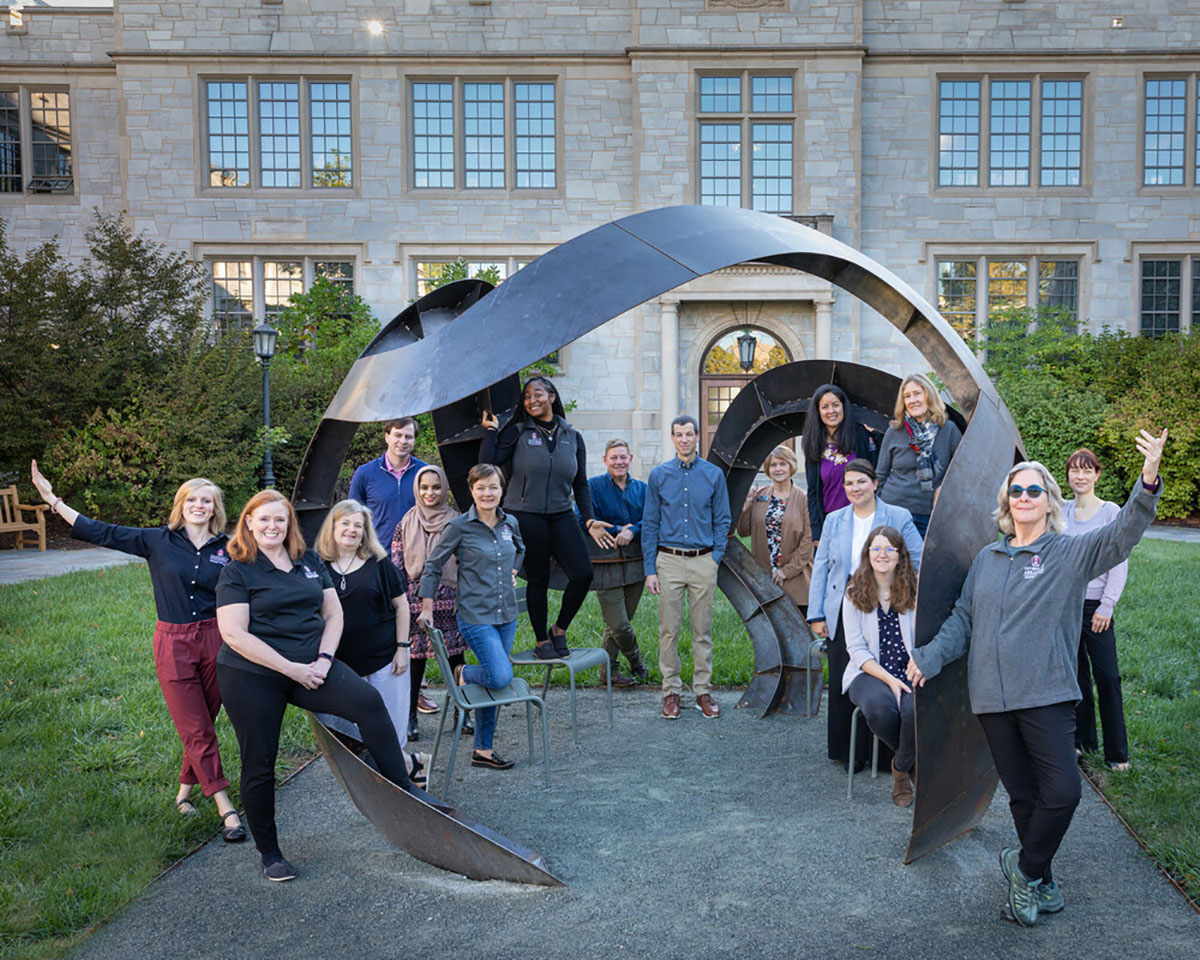
Harriss says the students in his class learned the value of collaborative work during the Curvahedra creation process, as well as the potential of diverging from the standard way of producing things.
“It was a robust example of how mathematical solutions can be used in the world,” he said. “In this context, it becomes easier to think about moving between the physical and abstract worlds using mathematical techniques.”
Short Takes: Courtyard Curvahedra
Learn more about the courtyard Curvahedra on the U of A campus in this episode of Short Takes.